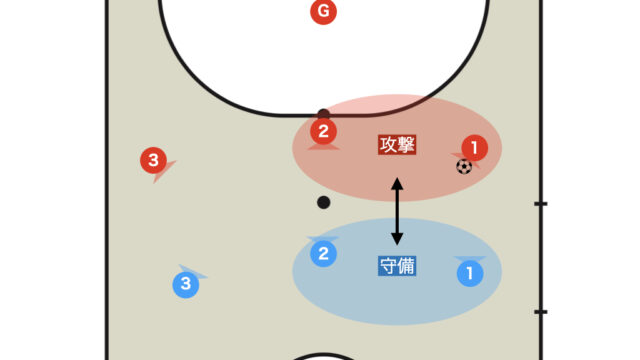Have you ever been puzzled about what to do when two players end up in the same lane (side lane) during futsal?
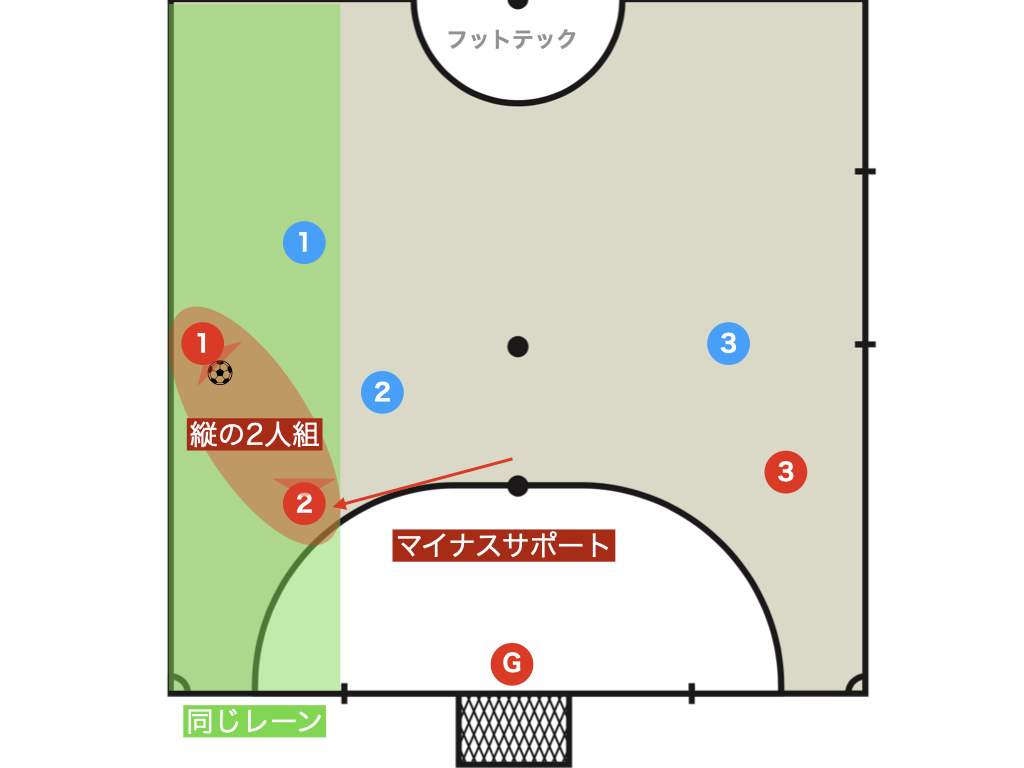
This article explains the short vertical duo (ala‑fixo) that anyone playing futsal at a competitive level should definitely know about.
Priority of the Vertical Duo
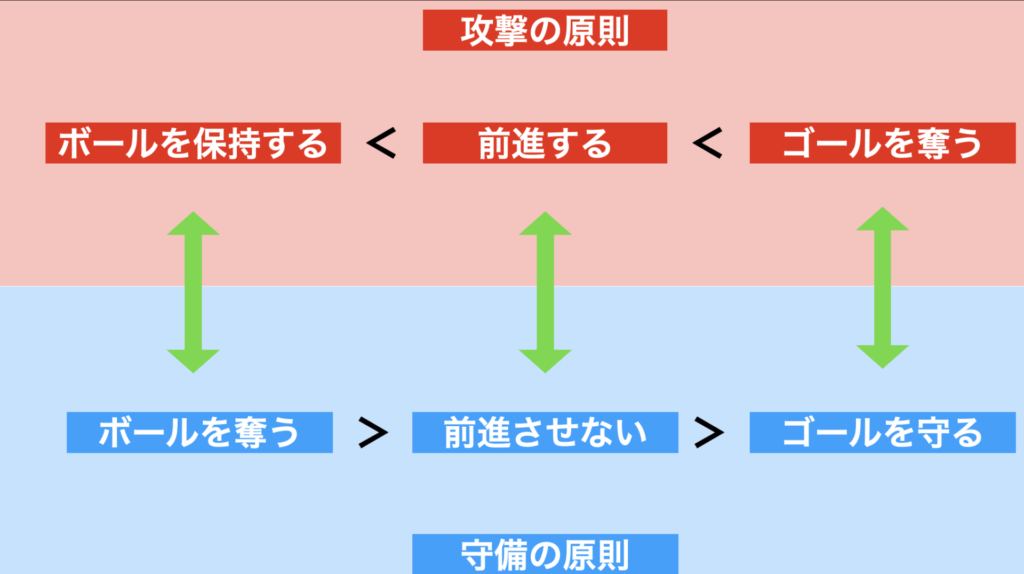
According to the basic principles of football, advancing takes precedence over merely maintaining possession.
Therefore, the priority is vertical block & continue over the volante.
Vertical Block & Continue (Pick & Roll)
Conditions for Success
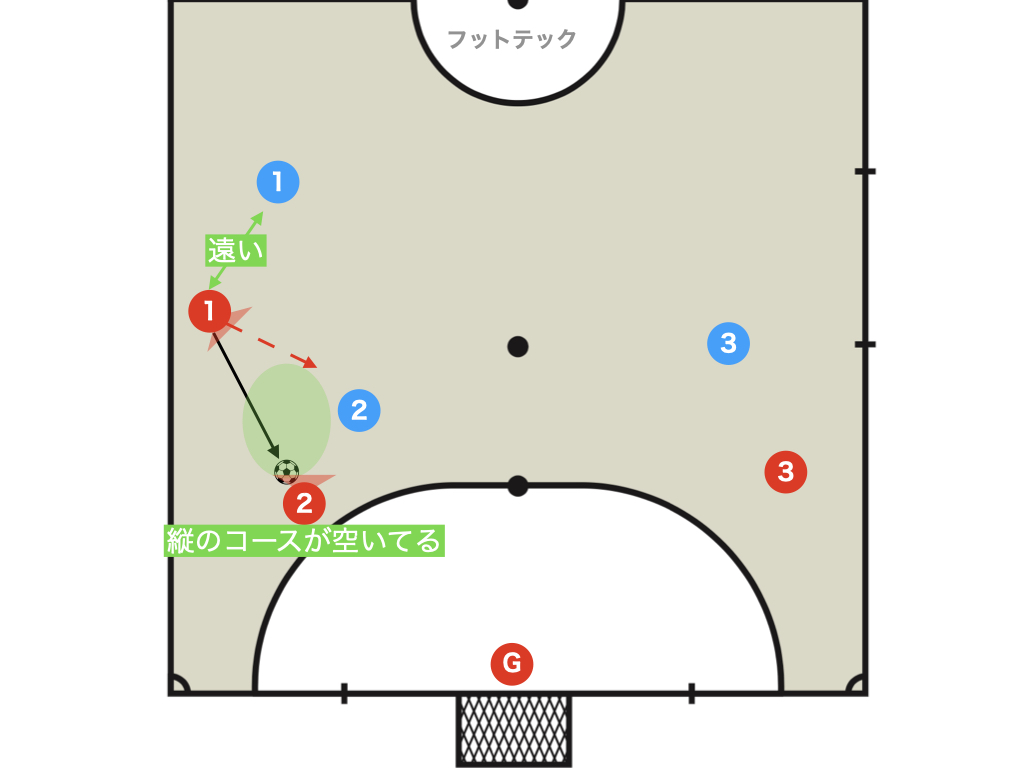
- The ball handler (Red No. 2) has an open vertical channel
- The non‑ball handler (Red No. 1) and the opponent’s defender are sufficiently separated or, by not following the line cut, maintain multiple lines (zonal defence)
Block & Advance from Behind the Opponent (Surpassing the First Line)

The ball handler quickly dribbles past the first line (Blue No. 2), preventing the blocked defender (Blue No. 2) from keeping up.
Local Numerical Superiority (2vs1)
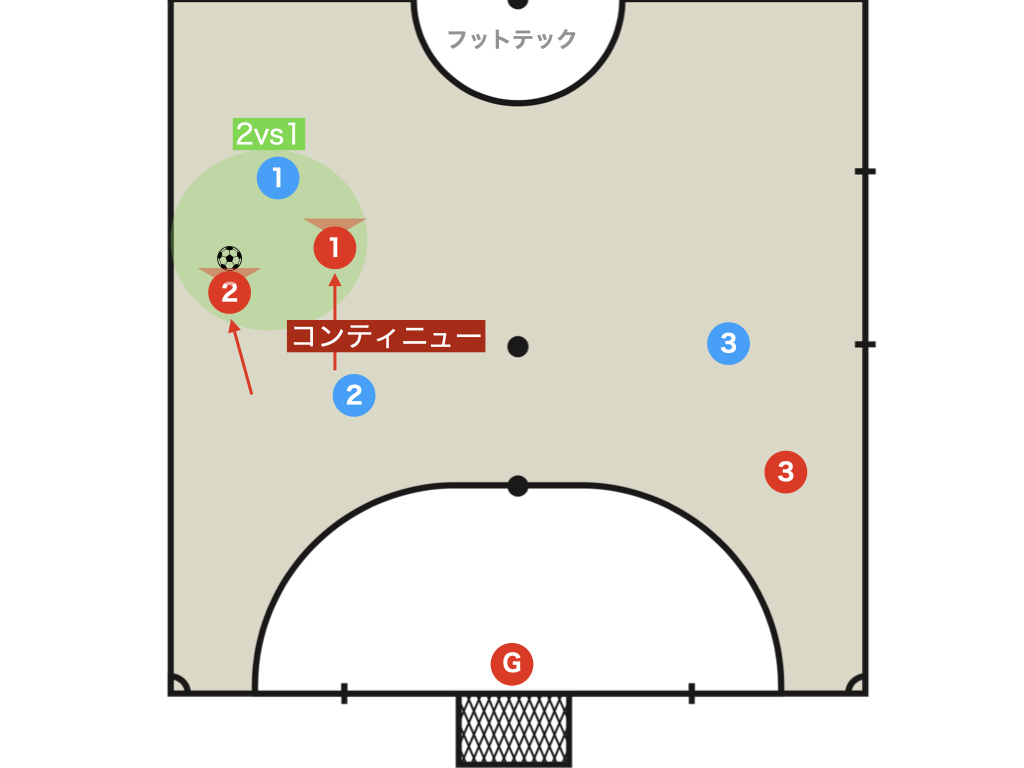
The player who performed the block continues immediately, creating a 2vs1 local numerical superiority.
Poor Example: Getting Drawn into Man-to-Man Marking
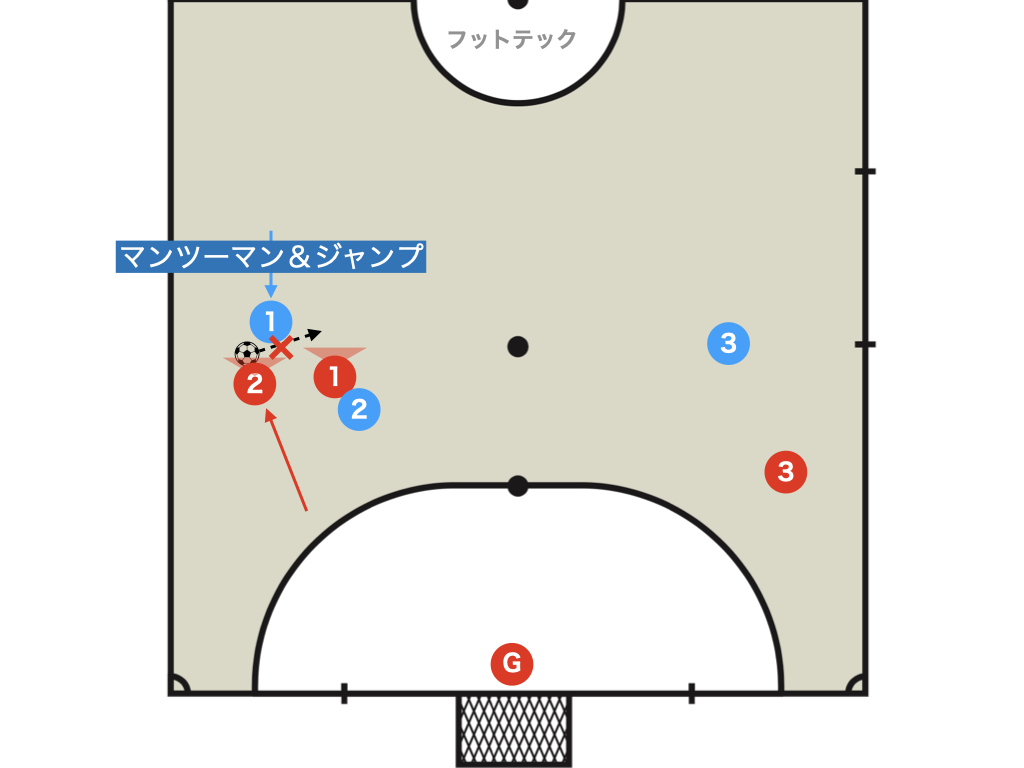
If, in the initial setup, the player performing the block (Red No. 1) is too close to the opponent’s marker and gets involved in man‑to‑man marking, they can be easily beaten; thus, in such situations, a vertical block should not be chosen.

When the vertical channel is obstructed or there isn’t enough width on the side to carry the ball, one must choose the volante instead of a vertical block.
Volante
The term “volante” refers to the collective tactics that involve the non‑ball handler dropping into line (especially a line cut from the second to the first line) and the ball handler’s duo play.
It is also the group tactic that became widely known when Schlaiker Osaka frequently used it to win the F‑League in the 2016/2017 season.
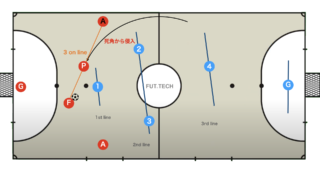
The volante is effective when the opponent’s defence is structured in multiple lines.
When the Opponent’s Defender Maintains Multiple Lines: Zone
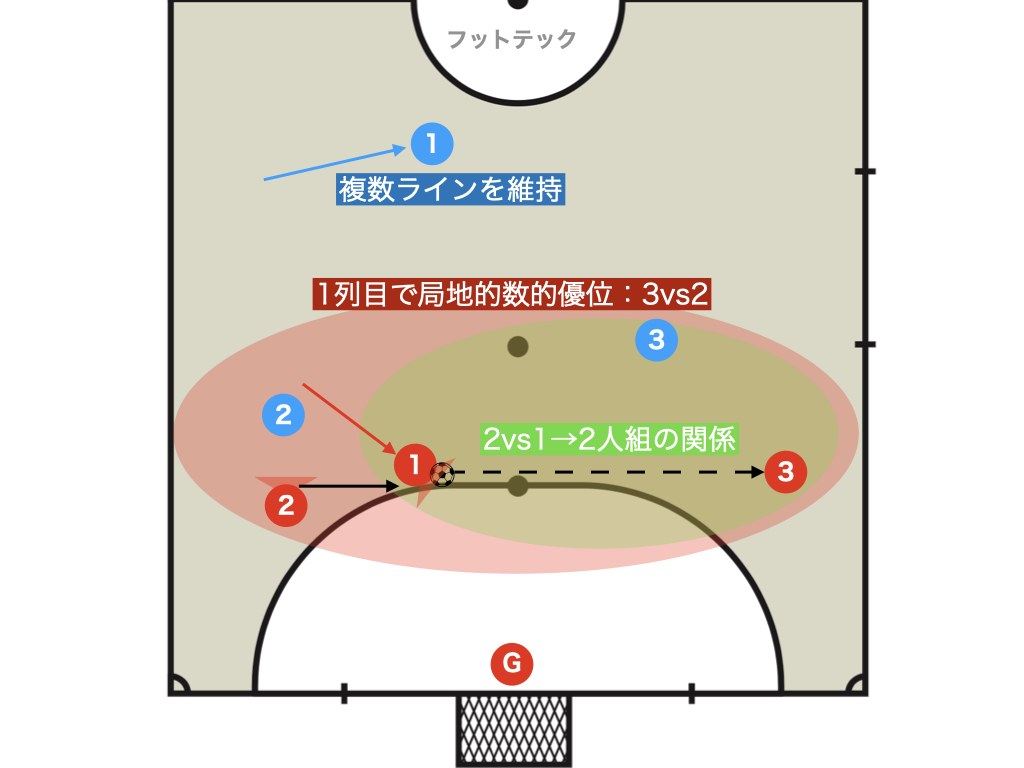
If the opponent does not follow the player who drops into line and maintains multiple lines, a 3vs2 numerical superiority is created in the first line, which can be exploited to advance.
Pisada is Also Effective
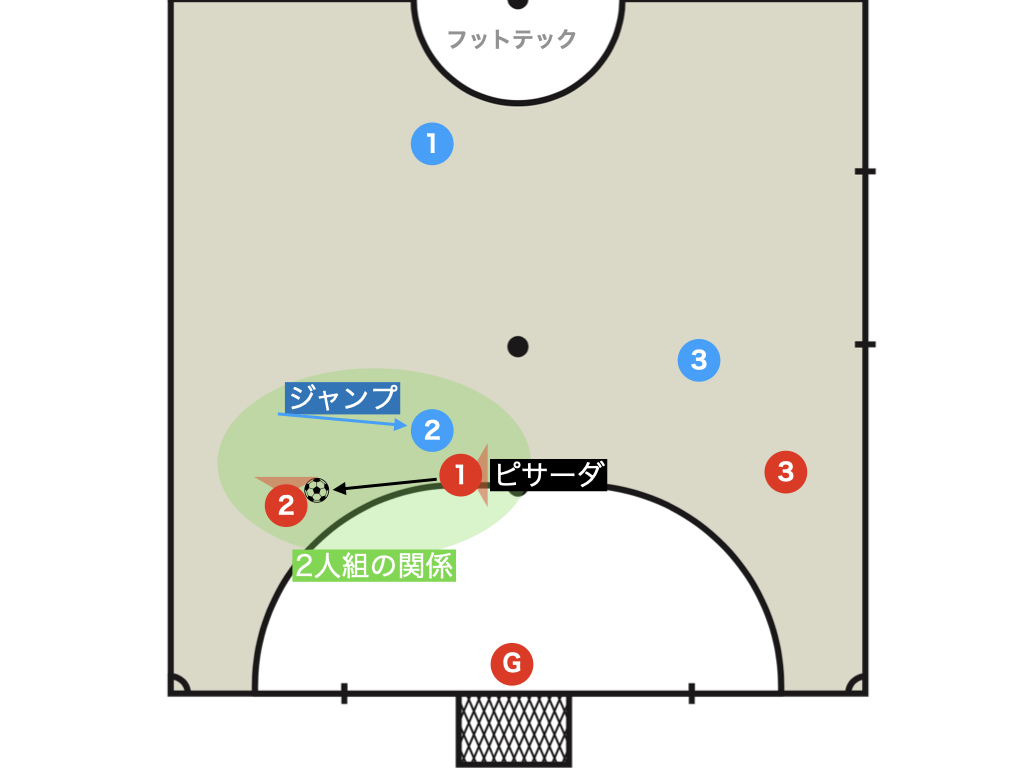
As shown in the above figure, when the opponent’s defender jumps forward, passing behind with a pisada to form a duo is effective.
When the Opponent’s Defender Follows in a Man-to-Man Manner
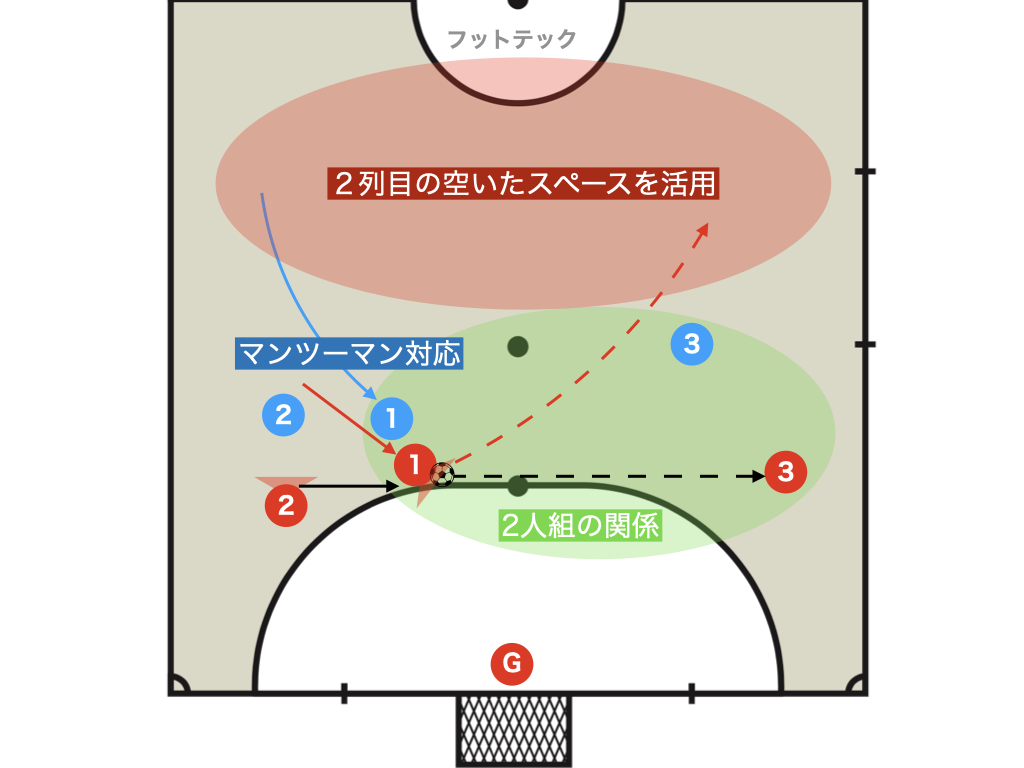
If the opponent follows the volante in a man‑to‑man manner, space opens up in the second line, allowing for a space attack with a duo.
- Parallera
- Diagonal
- Backdoor (one‑two)
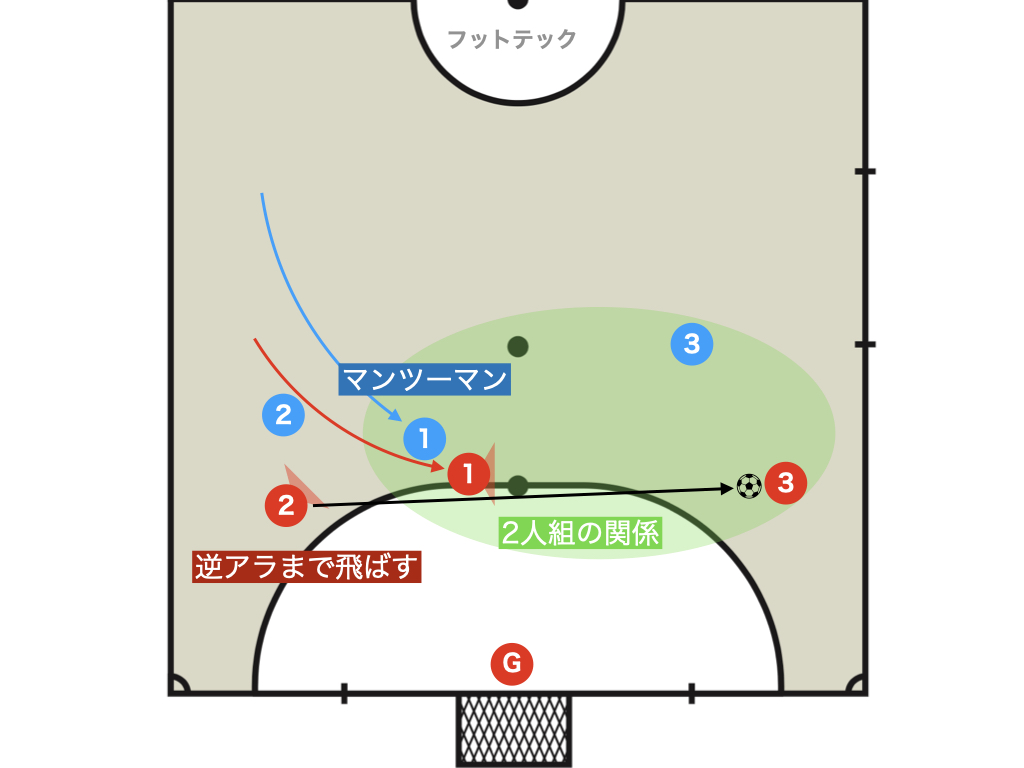
When the opponent employs man‑to‑man marking that makes passing from the volante difficult, sending the ball all the way to the opposite‑side ala is effective.
If the goal is to form a duo on the opposite side regardless of the opponent’s defensive response, it is effective to bypass a standard volante pass and quickly switch play to that side.
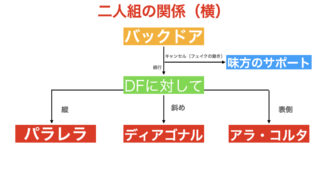
Supplement: Three Types of Volante
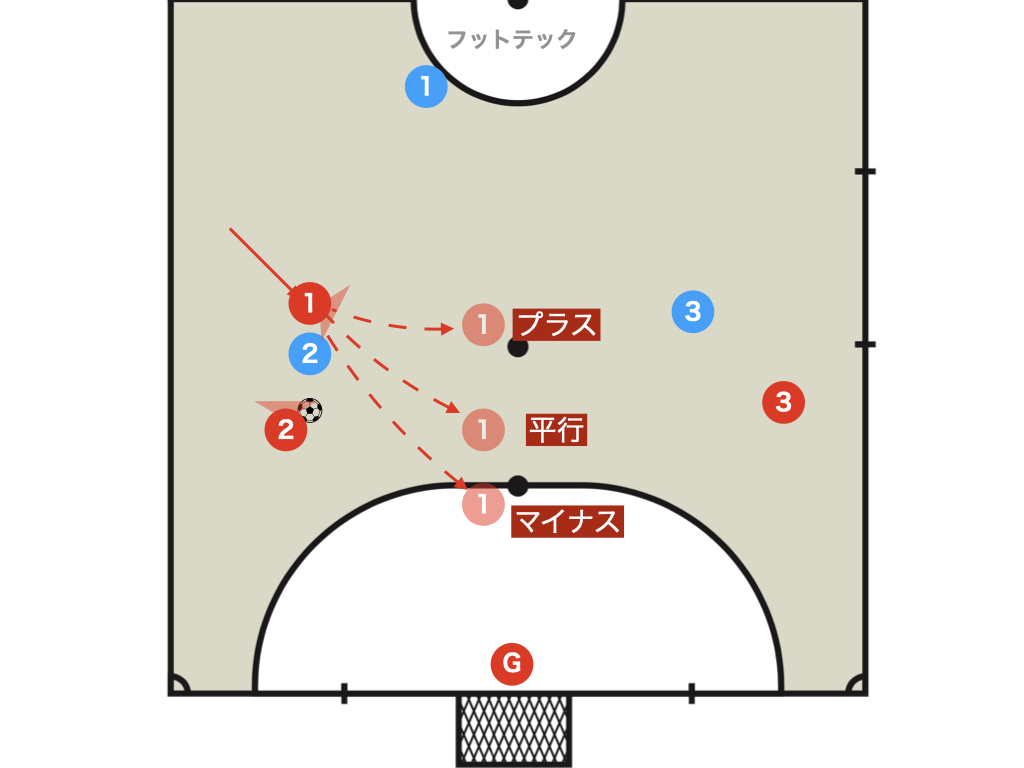
This jiseiza movement can be broadly divided into three types, as shown above.
- Receive on the positive side of the ball line
- Receive parallel to the ball (goal) line
- Receive on the negative side of the ball line
It is important to adjust according to the opponent’s defensive response and your team’s model.
Mistakes You Must Never Make with the Vertical Duo
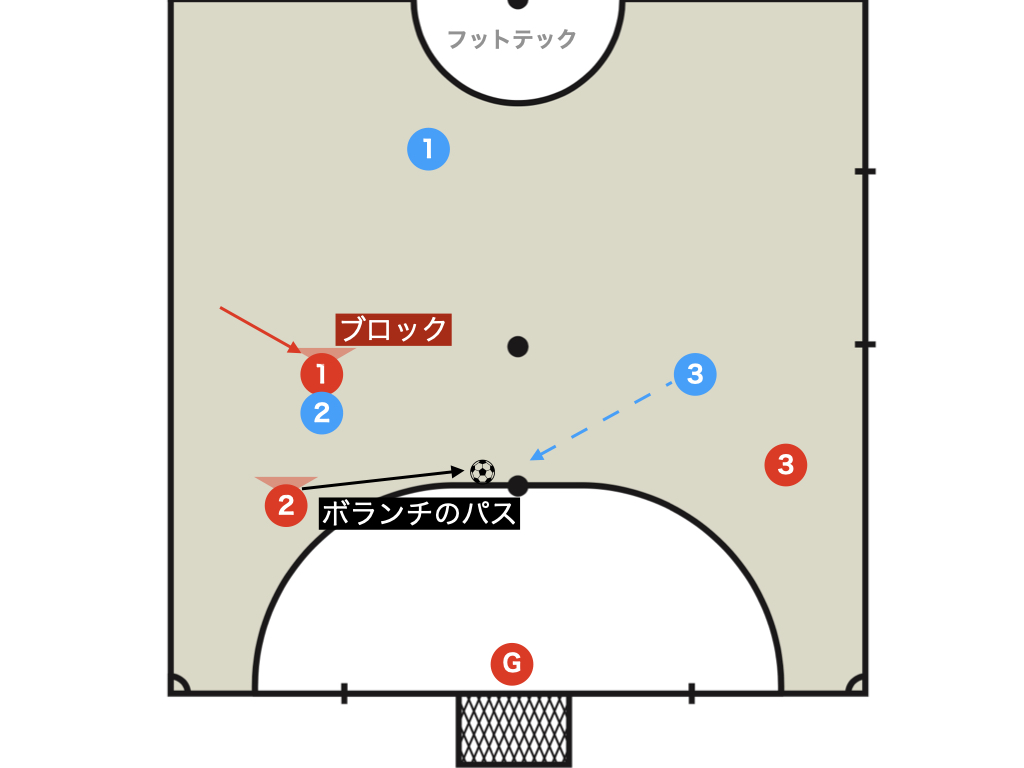
A common mistake in the vertical duo is confusing the roles of block and volante.
In the above figure, for instance, while Red No. 3 is executing a blocking action, Red No. 1 mistakenly assumes the role of the volante and passes the ball in front of an empty goal area.
Considering such risks, many teams opt to use the volante for both roles in a vertical duo.
Supplement: Pulling Vertically
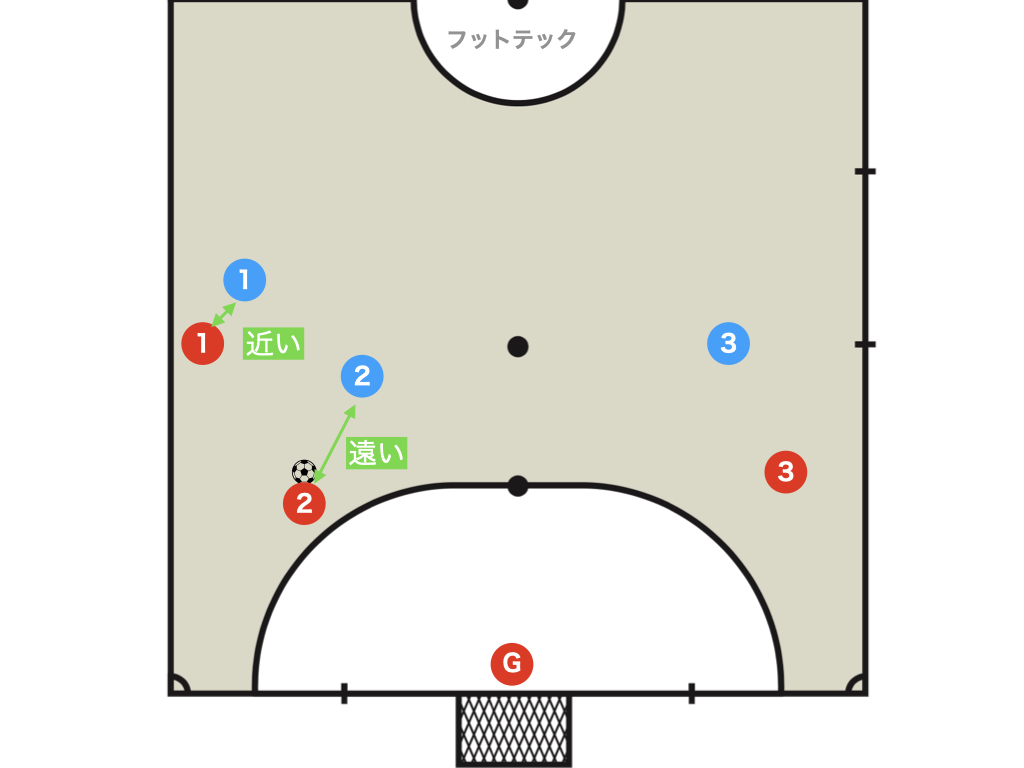
As shown in the above figure, when the ball handler is not under pressure and Red No. 1 has an opportunity to get behind the opponent, it is possible to execute a breakdown like the following.
Backdoor
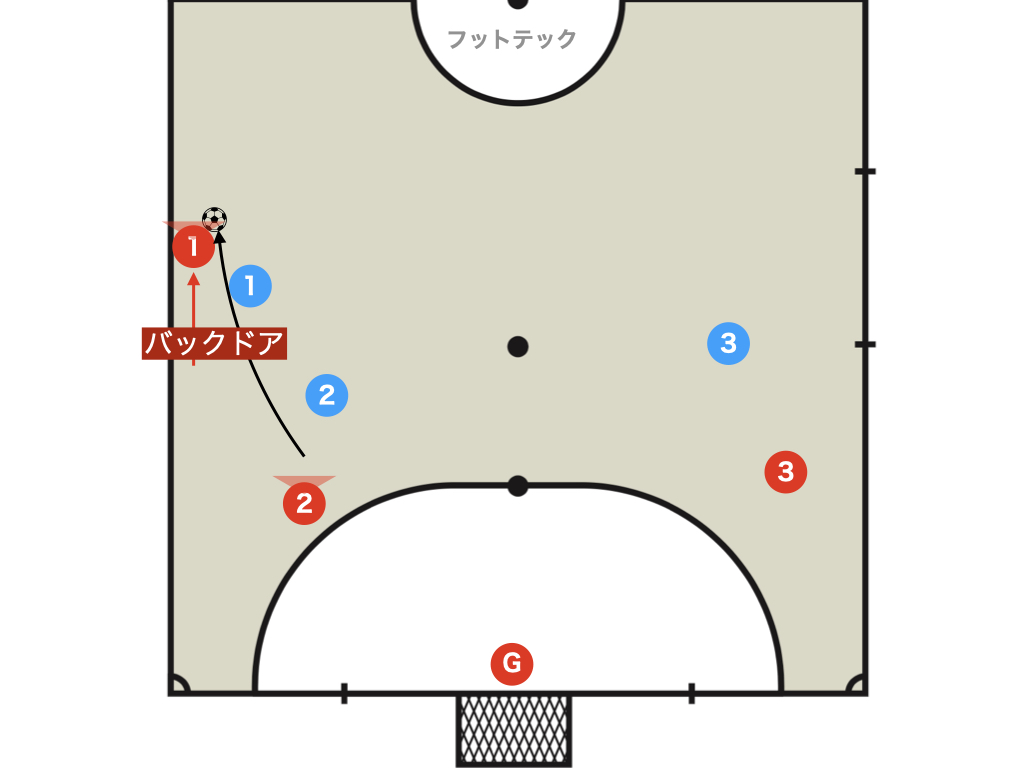
The passer needs to slightly carry the ball on a touch‑line while delivering a looping pass that goes over the head.
Because this requires a certain level of skill from the passer, it is rarely showcased as a best practice.
Mid Parallera
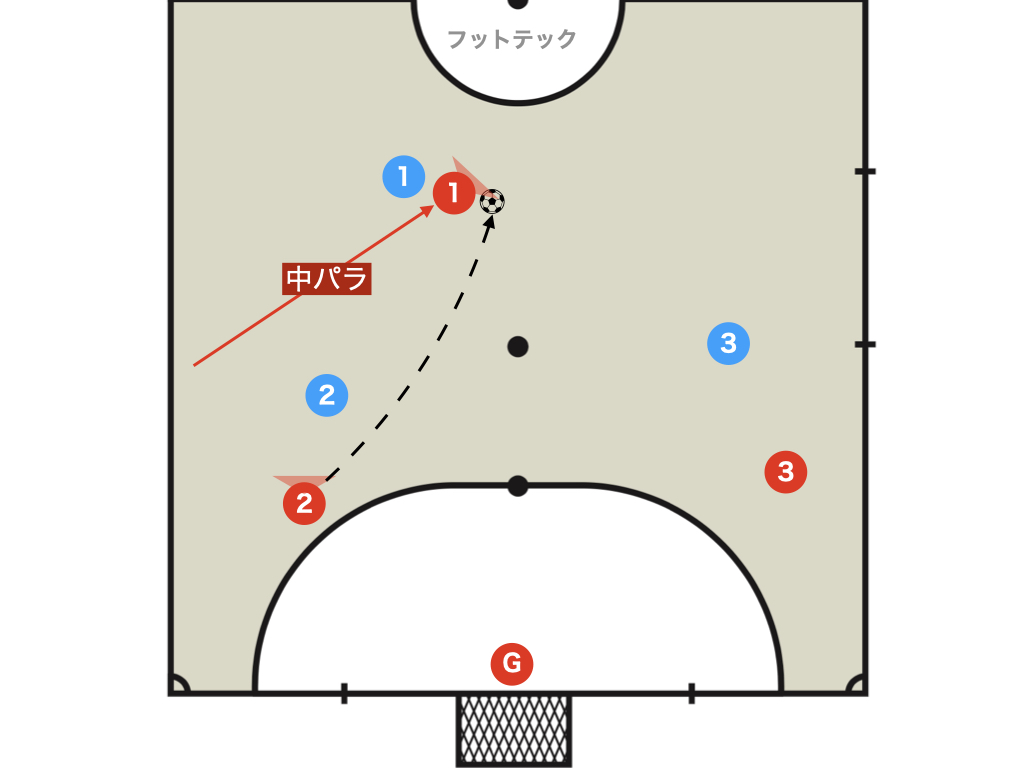
The tactic where the ala receives a pass in the center lane with a movement similar to Parallera is sometimes called “mid Parallera.” (Although it is not parallel to the touchline, it has been arbitrarily named as such. There is no strictly defined name for this tactic.)
Thank you very much for reading this article to the end.
If you found this article useful, please consider sharing it using the social media share buttons above.
We regularly share valuable insights on futsal tactics on Twitter, so if you haven’t followed us yet, we’d appreciate your support!
We are committed to raising the level of futsal in Japan by sharing high-quality information through discussions with individuals who have coaching experience in the F.League and overseas.
If you have any questions or notice any mistakes, feel free to leave a comment below.
We update our articles regularly, so if you’d like to keep reading, please bookmark our site or search for “FutTech”!

